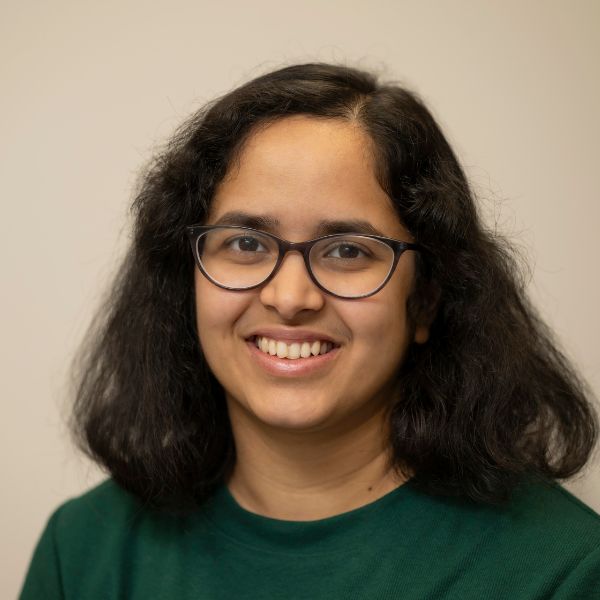Samskrathi Sharma (she/her)
Mellon College of Science
PhD in Biological Sciences
Hometown: bengaluru, india
-
Briefly describe the work you're doing in your program at CMU.
I study how gut microbes modulate our gut clock and affect our metabolism! Our circadian rhythms tell our body when to do different things at specific times of day and night. Our bodies can absorb nutrients from food and fight infections better at specific times of day and night. This is because every cell in our body has a circadian clock that helps it to synchronize these biological phenomena to time of day. I work with mice for my research and have found so far that mice with a disrupted gut circadian clock protein are prone to diet-induced obesity.
The findings of my PhD work will have an impact on examples where sleep/wake cycles are disturbed, including nightshift work or jetlag since individuals are known to be prone to obesity and other metabolic disorders. Ultimately, identifying the role of the circadian clock in metabolism could have implications on therapeutics that target the circadian clock.
-
How did you develop an interest in this area?
I worked on several different topics before my PhD and these diverse backgrounds played (still play) a key role in improving the way I approach any scientific problem. In my undergraduate, I worked on improving fish growth for aquaculture farmers using pineapple peel wastes! This was my first introduction to research, and I realized that I was very driven by the impact that my scientific research could have on society. My quest to understand biology in human health began as a part of my master’s, where I worked on developing a cancer therapeutic inspired by accounts of traditional medicine. This played a key role in determining my PhD field of interest due to the direct impact I could have in improving human disease outcomes.
-
What are your academic and/or professional goals?
I aim to lead a research group that contributes to improving human health. The traditional scientist conducts thoughtful, rigorous experiments and their findings contribute to the improvement of society. This is a powerful role, where we also train the next generation of thinkers and students. However, I think this role is incomplete if we are not training the current generation! I think we scientists also owe it to society to explain the implications of the scientific discoveries we make. As an artist and scientist, I think that art can make science more accessible to the public. I aim to continue communicating my scientific findings to diverse audiences, as I am currently doing, using presentations, hands-on activities, outreach sessions and scientific artwork depicted via paintings and comics.
-
How do you spend your time beyond academic work?
I indulge myself in my many hobbies! Ever since I was three years old, I have been fascinated with the ability to imagine anything and bring it to life with art and craft. I love painting, creating new craft pieces, photography, creating new dishes, trying out new cuisines, traveling, and writing. All these hobbies give me a chance to create something new, or look at something that already exists from a different point of view. I’m also a trained Bharatnatyam (Indian classical dance form) dancer. I love sending and receiving traditional mail, so I also started Postcrossing a few months ago!
Photo Credit: Kevin Lorenzi
